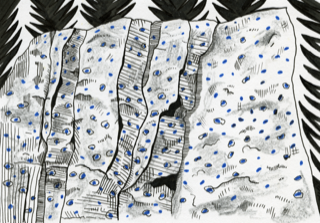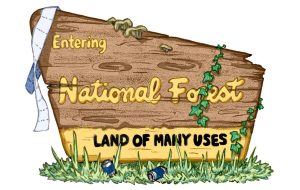Opening up the OP
February 24, 2022

Whitties are not rocking with surface-level inclusion efforts. Campus-wide diversity issues are especially prevalent in athletics and outdoor spaces, and effectively addressing them requires careful examination.
Skiing and rock climbing, both hugely popular at Whitman, are incredibly white-dominated and far more accessible to people with a lot of money.
The OP has been trying to change the demographics of these outdoor activities to better reflect the diversity of our campus (not that Whitman is particularly diverse to begin with). This means addressing some major accessibility issues, and also requires intense examination of the culture these predominantly white environments foster.
Whitman has implemented several programs meant to level the playing field economically. One example is the Leadership Education Advancement Fund (LEAF), which gives every first-year Whittie $150 to participate in a Whitman Outdoor Orientation Trip (WOOT).
First-year Kenzie Bay, rock climbing instructor and 10-year competitive climber, compared Whitman’s rock climbing gym’s accessibility with gyms in Colorado.
“The gyms where I climb at are pretty commercialized and I would say like, possibly more like higher end. A membership is insanely expensive. And then there are all these additional costs whereas here rental shoes and harnesses are free, and we give a five dollar basics class, so it’s a bit easier,” Bay said.
Expensive gear is one thing, but for people with lower socioeconomic statuses, there are greater risk factors associated with potentially getting injured.
Having good health insurance is a huge privilege many of us at Whitman take for granted, myself included. I’ve never been told to shy away from any dangerous activity because of the looming threat of ridiculously expensive medical bills. Many people do not have this luxury. On top of that, many people without sick days won’t risk injury because they cannot afford to miss work.
Financial barriers are not the only factor contributing to the Outdoor Program’s lack of diversity: differing cultural backgrounds also play a role.
First-year Arham Khan, the Outdoor Program’s outreach coordinator, had never climbed prior to coming to Whitman.
“Back home, rock climbing…it’s not a sport, more of a family activity. But here, it doesn’t really feel like that family fun kind of activity thing. It does have that seriousness about it which I was very put off by,” Khan said. “They encouraged you to go in and try it out and everything but once you go in and see people who have all that experience it is really intimidating.”
Trying any sport for the first time is scary. I was quite surprised—and frankly embarrassed—by my inability to finish a V-0 (the easiest route level) when I first climbed here. But even I am speaking from a place of enormous privilege: besides my lack of athletic talent, nothing made me feel out of place at the Whitman climbing gym.
Unfortunately, for students of color, this is not always the case.
“Going into a predominantly white space, a space that is controlled by white people, it’s run by white people, and it caters to white people, such as the Outdoor Program equipment room, it can be an uncomfortable experience,” first-year Nao Minicola said.
Surface-level equity efforts that don’t do much to address actual problems are common in predominantly white institutions. Whitman is no exception. Minicola recounted a story she heard from a classmate:
“One of the head people in the climbing gym wanted to increase POC attendance, so he looked at the logins for who climbed that day and emailed all the people of color on the list to tell them to come back and bring their friends,” Minicola said.
Tokenizing minorities like this exacerbates the problem. Thoughtless diversity efforts are not only counterproductive, but can also make students of color feel even more uncomfortable.
Since the climbing community is pretty male-dominated, it can be intimidating for women—even those who have been climbing for a while. Therefore, every Tuesday the climbing gym hosts “Ladies+ Climb Night” for women and nonbinary climbers only.
“It is nice to have an allotted space … for women,” Bay said.
Minicola has a different perspective on this weekly event.
“Ladies Climb Night ignores intersectionality,” Minicola said. Several initiatives at Whitman cater to people affected by one form of oppression; for example, they might focus on racial inclusion and LGBTQ inclusion separately rather than simultaneously. Minicola suggested that they added a climb night for women of color, or for people of color and women at the same time.
There are other ways to address equity issues in the climbing gym. An example of one, suggested by Khan, is adding days for strictly newcomers, which I would certainly check out.
Khan is the first international student to work as the OP Outreach coordinator. He’s been working with Stuart Chapin, the vice director of the OP, to liaise on behalf of international students. He works to involve groups the OP doesn’t typically attract (he listed international students, BIPOC students, and First Generation/Working Class (FGWC) students), in a careful and intentional way.
This semester, the OP launched a series of international student-only trips. These trips, geared towards beginners, aim to familiarize international students with the Outdoor Program. They’ve done two so far, and have a few more coming up. Though they’ve had limited success with these trips, Khan noted that it will probably take a while for these programs to accomplish their goals, one of those being international students signing up for more trips in the future.
“We need to pitch whatever our resources are towards groups that aren’t excluded from the OP but don’t really feel welcome,” Khan said.
These trips are advertised via private listservs, which means they are only marketed to the groups they’re meant for. This is because they want actual change, and don’t want their efforts to seem like performative justice.
I mentioned that I hadn’t seen much publicity for these trips, and Khan said that he thinks the best way to advertise them is “behind closed doors.”
“We don’t want them to feel like the campus diversity photographer is following them around,” Khan said.
Khan brings up an important point about minorities being tokenized in brochures and on websites to create the false impression of a diverse community. Unfortunately, we see this everywhere, but like Khan said, the Outdoor Program is avoiding this through careful and intentional marketing.
Whitman constantly preaches diversity and inclusion. The administration boasts a high percentage of international students and generous financial aid, but there is still a campus-wide equity and diversity issue which extends into niches beyond the Outdoor Program. To address them, we must look into deep-rooted systemic inequalities, and educate ourselves on what equity truly looks like.






Carsten Wallace-Bailey • Feb 24, 2022 at 10:44 pm
Great job Amelia